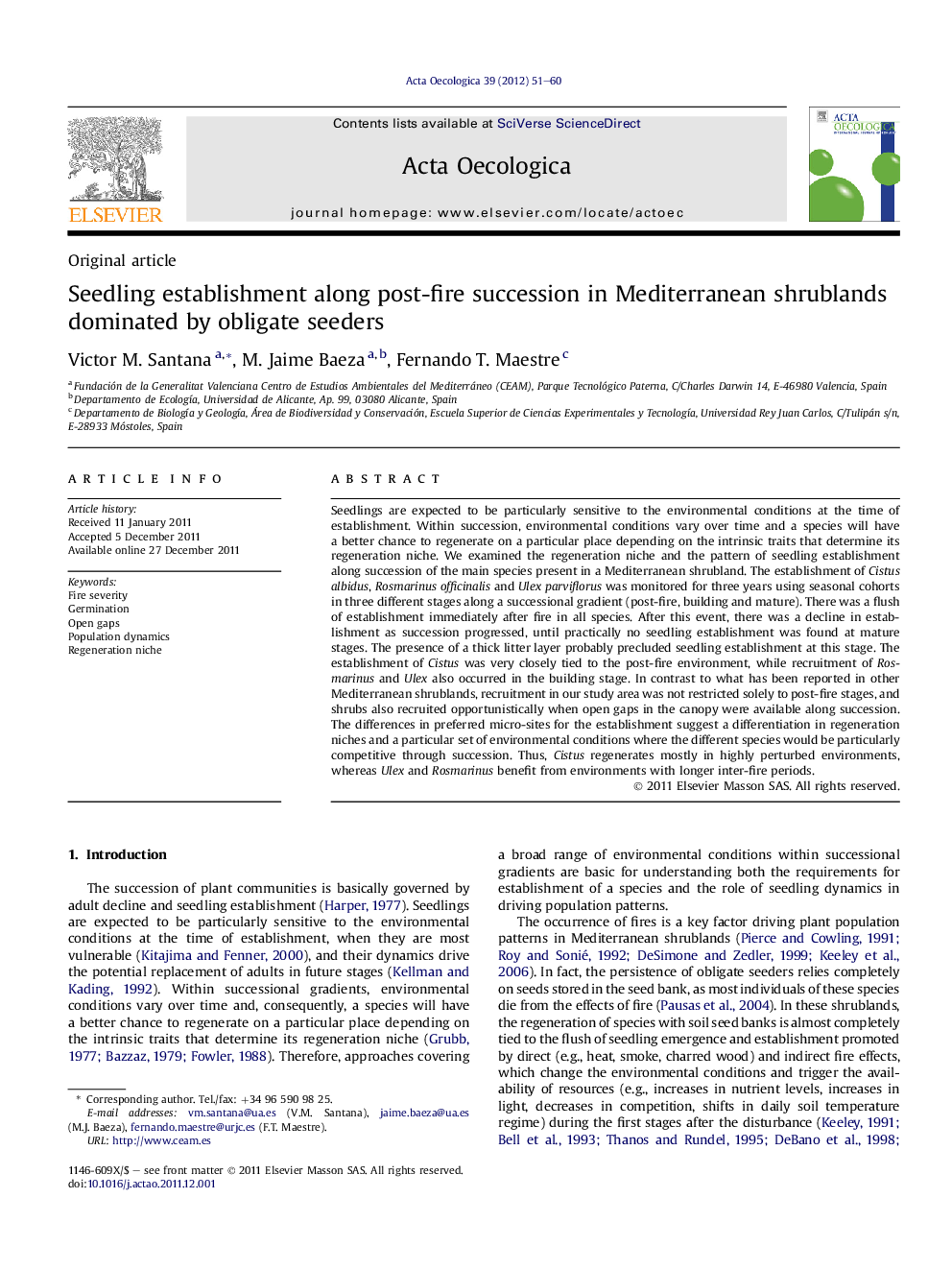| Article ID | Journal | Published Year | Pages | File Type |
|---|---|---|---|---|
| 4381261 | Acta Oecologica | 2012 | 10 Pages |
Seedlings are expected to be particularly sensitive to the environmental conditions at the time of establishment. Within succession, environmental conditions vary over time and a species will have a better chance to regenerate on a particular place depending on the intrinsic traits that determine its regeneration niche. We examined the regeneration niche and the pattern of seedling establishment along succession of the main species present in a Mediterranean shrubland. The establishment of Cistus albidus, Rosmarinus officinalis and Ulex parviflorus was monitored for three years using seasonal cohorts in three different stages along a successional gradient (post-fire, building and mature). There was a flush of establishment immediately after fire in all species. After this event, there was a decline in establishment as succession progressed, until practically no seedling establishment was found at mature stages. The presence of a thick litter layer probably precluded seedling establishment at this stage. The establishment of Cistus was very closely tied to the post-fire environment, while recruitment of Rosmarinus and Ulex also occurred in the building stage. In contrast to what has been reported in other Mediterranean shrublands, recruitment in our study area was not restricted solely to post-fire stages, and shrubs also recruited opportunistically when open gaps in the canopy were available along succession. The differences in preferred micro-sites for the establishment suggest a differentiation in regeneration niches and a particular set of environmental conditions where the different species would be particularly competitive through succession. Thus, Cistus regenerates mostly in highly perturbed environments, whereas Ulex and Rosmarinus benefit from environments with longer inter-fire periods.
► Ecological factors driving successional seedling dynamics in Mediterranean shrublands. ► Establishment was high after fire, then it declined as the succession progressed. ► The thick litter layer precluded the seedling establishment. ► Differences in preferred micro-sites of species suggest different regeneration niches. ► The different species are more competitive in a particular set of conditions.
